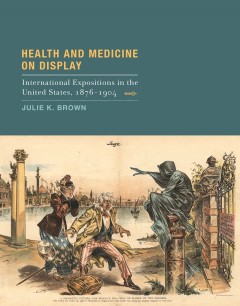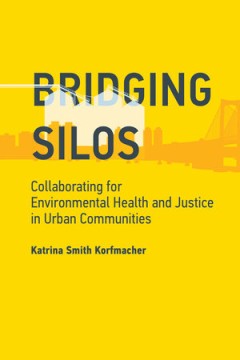Filter by

Ethics, Integrity and Policymaking
This Open Access book provides illustrative case studies that explore various research and innovation topics that raise challenges requiring ethical reflection and careful policymaking responses. The cases highlight diverse ethical challenges and provide lessons for the various options available for policymaking. Cases are drawn from many fields, including artificial intelligence, space science…
- Edition
- 1
- ISBN/ISSN
- 978-3-031-15746-2
- Collation
- -
- Series Title
- Research Ethics Forum
- Call Number
- VIII, 207

Sex Differences in Reading and Math Test Scores of Children
This open access book examines why reading and math test scores for boys and girls have differed since the origins of testing in the United States. It details the pattern of differences that have remained largely unchanged for more than 100 years in the United States and worldwide. The book explores why boys have modestly larger math test score means than girls, and why girls have far larger re…
- Edition
- -
- ISBN/ISSN
- 978-3-031-41271-4
- Collation
- XII, 108
- Series Title
- -
- Call Number
- -

Pflege-Report 2023
Fragen der Versorgungsqualität gewinnen zunehmend an Bedeutung. Das gilt auch für die pflegerische Versorgung. Der Pflege-Report, der jährlich in Buchform und als Open-Access-Publikation erscheint, beleuchtet im Schwerpunkt 2023 die Versorgungsqualität von Langzeitgepflegten. Bereits im Jahr 2018 stand das Thema „Qualität in der Langzeitpflege“ im Fokus des Pflege-Reports. Viel ist sei…
- Edition
- -
- ISBN/ISSN
- 978-3-662-67668-4
- Collation
- XVI, 289
- Series Title
- -
- Call Number
- -

Health and medicine on display : International Expositions in the United Stat…
This work offers a book-length examination of how international expositions, through their exhibits and infrastructures, sought to demonstrate innovations in applied health and medical practice.
- Edition
- -
- ISBN/ISSN
- -
- Collation
- 1 online resource (xi, 326 pages) :
- Series Title
- -
- Call Number
- -

Bridging the silos :collaborating for environment, health, and justice in urb…
OCLC-licensed vendor bibliographic record.
- Edition
- -
- ISBN/ISSN
- 9780262354981
- Collation
- 1 online resource (376 pages) :illustrations.
- Series Title
- -
- Call Number
- -

What Every Woman Should Know about Cervical Cancer Revised and Updated
This book (an updated and extended edition) is about mobilizing women and health care policy makers and providers to unite their efforts in a single strategy for fighting cervical cancer worldwide. The objective of this strategy would be to reverse cervical cancer prevalence and mortality rates among all 2.4 billion women at risk and to achieve this goal within 10-15 years of implementation. Ce…
- Edition
- -
- ISBN/ISSN
- 978-94-017-7560-1
- Collation
- -
- Series Title
- -
- Call Number
- -

More than a health crisis :securitization and the US response to the 2013-201…
"Examines the US securitization of the 2013-2016 Ebola outbreak, exploring how Ebola was understood as a security threat and how this impacted on the US response to the health crisis"--OCLC-licensed vendor bibliographic record.
- Edition
- -
- ISBN/ISSN
- 9780262374859
- Collation
- 1 online resource
- Series Title
- -
- Call Number
- -

People count :contact-tracing apps and public health
An introduction to the technology of contact tracing and its usefulness for public health, considering questions of efficacy, equity, and privacy. Contact tracing is key to containing and controlling the spread of a virus in a pandemic. South Korea, China, and Singapore were among the few countries that quickly employed contact tracing after the emergence of COVID-19; the United States did not.…
- Edition
- -
- ISBN/ISSN
- 9780262363822
- Collation
- 1 online resource (120 pages).
- Series Title
- -
- Call Number
- -

War on all fronts :a theory of health security justice
"Shows the flaws in using "the war metaphor" to understand and organize our response to pandemics and urges its abandonment"--OCLC-licensed vendor bibliographic record.
- Edition
- -
- ISBN/ISSN
- 9780262374224
- Collation
- 1 online resource.
- Series Title
- -
- Call Number
- -

Epidemic illusions :on the coloniality of global public health
A physician-anthropologist explores how public health practices--from epidemiological modeling to outbreak containment--help perpetuate global inequities. In Epidemic Illusions, Eugene Richardson, a physician and an anthropologist, contends that public health practices--from epidemiological modeling and outbreak containment to Big Data and causal inference--play an essential role in perpetuatin…
- Edition
- -
- ISBN/ISSN
- 9780262362634
- Collation
- 1 online resource
- Series Title
- -
- Call Number
- -
 Computer Science, Information & General Works
Computer Science, Information & General Works  Philosophy & Psychology
Philosophy & Psychology  Religion
Religion  Social Sciences
Social Sciences  Language
Language  Pure Science
Pure Science  Applied Sciences
Applied Sciences  Art & Recreation
Art & Recreation  Literature
Literature  History & Geography
History & Geography